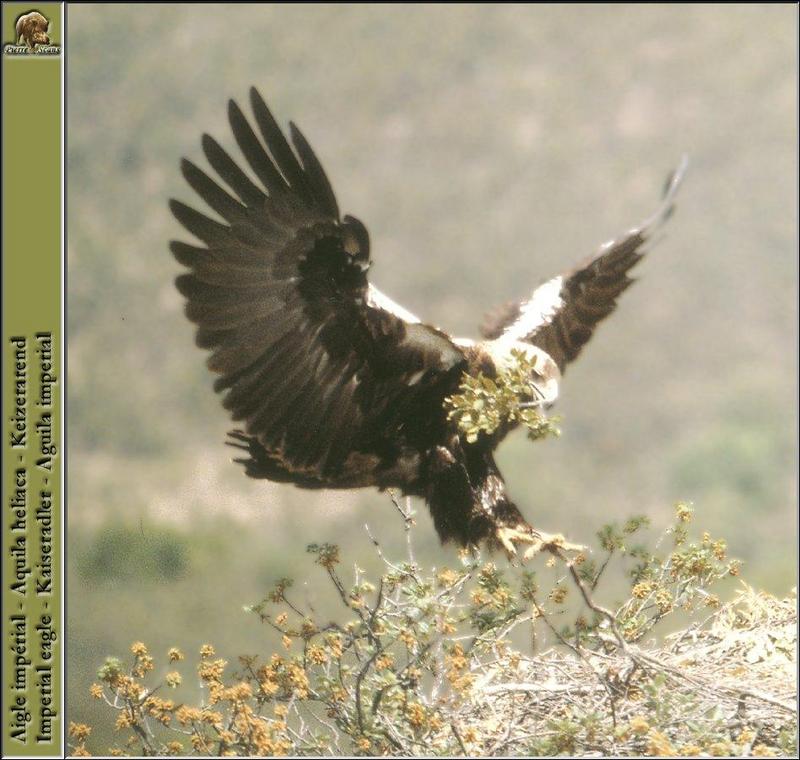|
| Query: bird | Result: 2170th of 32675 | |
Eastern Imperial Eagle in flight (Aquila heliaca) <!--흰죽지수리-->
| Subject: | Eastern Imperial Eagle in flight (Aquila heliaca)
| |

| Resolution: 947x900
File Size: 116504 Bytes
Upload Date: 2005:03:08 23:56:24
|
From: Pierre@home.be (Pierre)
Newsgroups: alt.binaries.pictures.animals,alt.binaries.pictures.artpics
Subject: Birds of prey - PO_bop_073_Aigle_imp??rial.jpg
Date: Thu, 12 Oct 2000 17:04:25 GMT
Eastern Imperial Eagle, (Aquila heliaca), is very similar to the Golden Eagle, but a little smaller (length 80 cm, wingspan 200 cm). It is not as powerful as its relative. This eagle belongs to the bird of prey family Accipitridae. Eastern Imperial Eagles are distributed in South East Europe, West and Central Asia. The Spanish Imperial Eagle, found in Spain and Portugal, was formerly lumped with this species, the name Imperial Eagle being used in these circumstances; however the two are now regarded as separate species due to significant differences in morphology, ecology, and molecular characteristics. |
^o^
Animal Pictures Archive for smart phones
^o^
|
|